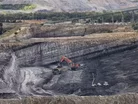Australia’s top 10 exports

In 2017, Australia’s Department of Foreign Affairs and Trade (DFAT) reported a trade balance of $1.56bn – but what are the top export sectors driving Australia’s economy forward?
10. Crude petroleum
In 2017, crude petroleum brought US$3.74bn (A$5.25bn) into the Australian economy. This marked a 10.4% year-on-year rise from the 2016 export figure of US$3.39bn (A$4.75bn). The most significant area for crude petroleum exports is Western Australia, which is said to produce over 70% of the country’s crude oil and condensate. The total share of the export market taken up by crude petroleum was 1.4% in 2017.
https://www.youtube.com/watch?v=JIKWzSP7NbQ
9. Wheat
Last year, Australia’s wheat exports were worth a total of $4.32bn (A$6.06bn), which marked a 24.9% increase from the previous year’s $3.46bn (A$4.85bn) in 2016. Sales of wheat took a 1.6% share of the country’s total exports. While wheat exports declined by around 34% in 2017, this year the industry is experiencing steady growth of just under 7%. The eight-year low experienced last year has reportedly been helped by heavier rain in Australia’s west in the past few months.
https://www.youtube.com/watch?v=nfJkusx-JII
8. Beef
In 2017, beef exports took up 1.9% of Australia’s total exports, bringing in $5.31bn (A$7.45bn). This marks a moderate increase of 0.7% from the 2016 figure of $5.28bn (A$7.4bn). In fact, in 2016 Australia was reportedly the third largest exporter of beef in the world, following India and Brazil, and was named in 2017 by the Red Meat Advisory Council as the world’s largest exporter of beef, as well as the largest consumer of the produce globally.
https://www.youtube.com/watch?v=53ivEr2Sd44
7. Aluminium ores
Aluminium ores (including alumina) made up 2.2% of Australia’s total 2017 export sales, brining $5.89bn (A$8.25bn) into the country. This marked a massive increase from 2016’s figure of $4.61bn (A$6.46bn) – as much as 30.4% year on year. Around the world, the main uses of aluminium are within the transportation, construction, electricals and consumer goods industries. The global aluminium market is valued at $133.6bn in 2015 according to Allied Market Research – this is set to increase to £167.3bn by 2022, representing a CAGR of 3.3%.
https://www.youtube.com/watch?v=Ufaj_S1TOGM
6. Gold
Though down by 6.5% from 2016, gold still has a place on Australia’s list of top exports, and contributed a total of $12.58bn (A$17.63bn) in exports. While this dipped from 2016’s figure of $13.46bn (A$18.86bn) but in 2017, the precious metal still takes up 4.6% of total exports. The largest gold mine in Australia is Boddington Gold Mine, located around 100km from Perth in western Australia. Upon the mine’s reopening in 2010, it was predicted to have a production capacity of 1mn ounces over five years. Proven ore reserves at the end of 2011 amounted to 20.3mn ounces of gold, as well as 2.26bn ounces of copper.
https://www.youtube.com/watch?v=RnDQi2DD8ik
5. Personal travel services
Personal travel services (excluding education-related travel, which makes up a significant segment of Australia’s service exports on its own), maintained a steady year-on-year rise of 0.4% in 2017. The invisible export brought $15.18bn (A$21.28bn) into the economy, following on from $15.12bn (A$21.19bn) in 2016. Overall, personal travel makes up 5.5% of Australia’s exports. Currently, Australia is one of the beneficiaries of a tourism boom in the surging aviation markets of China and India: around 1.4mn visitors came to Australia from mainland China, marking a 13% year-on-year increase, while visitor numbers from India rose 15%, reaching 302,900.
https://www.youtube.com/watch?v=V7dukhch8u0
4. Natural gas
In 2017, Australia exported $18.34bn (A$25.62bn) worth of natural gas. This industry has grown significantly over the past couple of years, with export sales increasing by 43% from 2016’s figure of $12.82bn (A$17.91bn). As of yet, natural gas makes up 6.6% of the total export space – but according to Business Insider this is only set to rise, with Australia expected to become the world’s largest exporter of natural gas by 2019. A report stated that LNG (liquefied natural gas) exports from the country will reach 77mn tonnes in 2018-19, up from 52mn in 2016-17.
https://www.youtube.com/watch?v=ulL9YQeKc6Y
3. Education-related travel services
According to the Department of Foreign Affairs and Trade, education-related travel encompasses the travel, fees and living expenses of students studying in Australia, across the sectors of: higher education; vocational, education and training; English Language Intensive Courses for Overseas Students; as well as an ‘other’ segment which includes non-award courses, students from New Zealand, and various government scholarships. Overall, this market brought in $21.71bn (A$30,26bn) in 2017, marking a significant increase of 17.3% from 2016’s figure of $18.5bn (A$25.79bn). Education-related travel services take up 7.8% of Australia’s total exports.
https://www.youtube.com/watch?v=FxSU7kS4zTw
2. Coal
It’s no surprise to see Australia’s coal industry high up on the exports list, and indeed it takes up a share of 14.8% of total exports. It is interesting to note that the fossil fuel industry is still experiencing massive growth, with 35.2% exhibited year on year in 2017. The figure amounted to $41bn (A$57.13bn) as opposed to 2016’s $30.32bn (A$42.27bn). The biggest operational coal mine in the country in terms of output is the Bulga Coal mine in Singleton, New South Wales, with 10.8mn tonnes of coal mined per annum, all of which is exported.
https://www.youtube.com/watch?v=fPKS_fb2_l4
1. Iron ores and concentrates
Iron ores and concentrates brought in a total of $45.26bn (A$63.09bn) into the Australian economy in 2017 and made up 16.3% of total exports. This marked a healthy 17.4% increase from 2016, when the industry made $38.57bn (A$53.76bn). The biggest iron ore mine in the country – and reportedly the seventh largest in the world – is Hamersley Basin, located in Western Australia, which has 1.72bn tonnes of proven and profitable iron ore reserves as investigated at the end of 2021. Rio Tinto and BHP Billiton are responsible for about 90% of all iron ore production in Western Australia, with Rio Tinto boasting a profit of $8.8bn (AU$12.26) in 2017.



